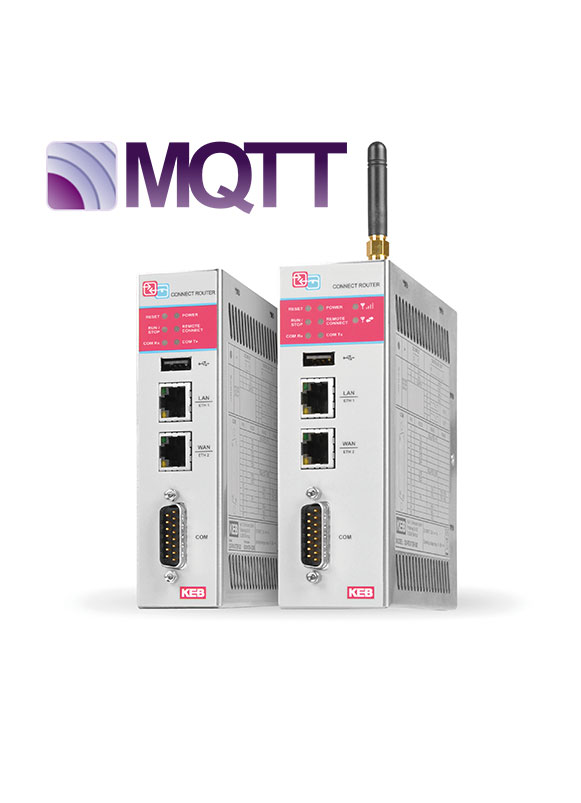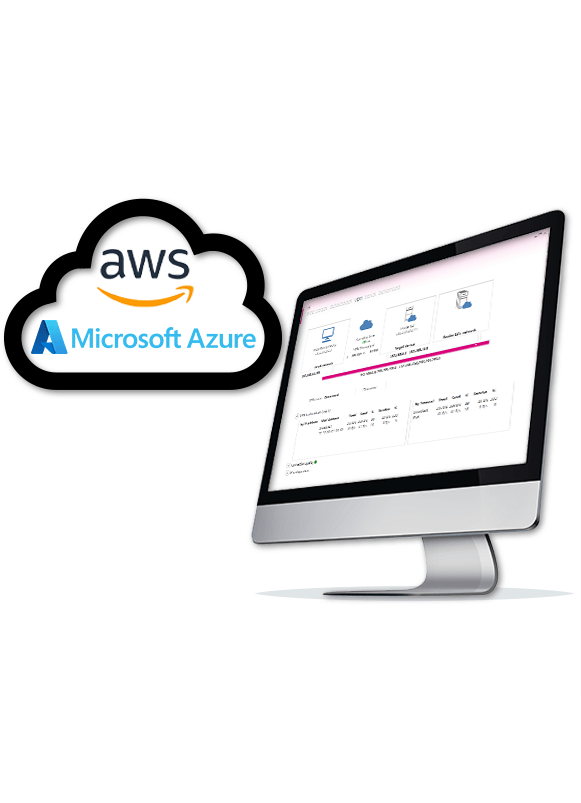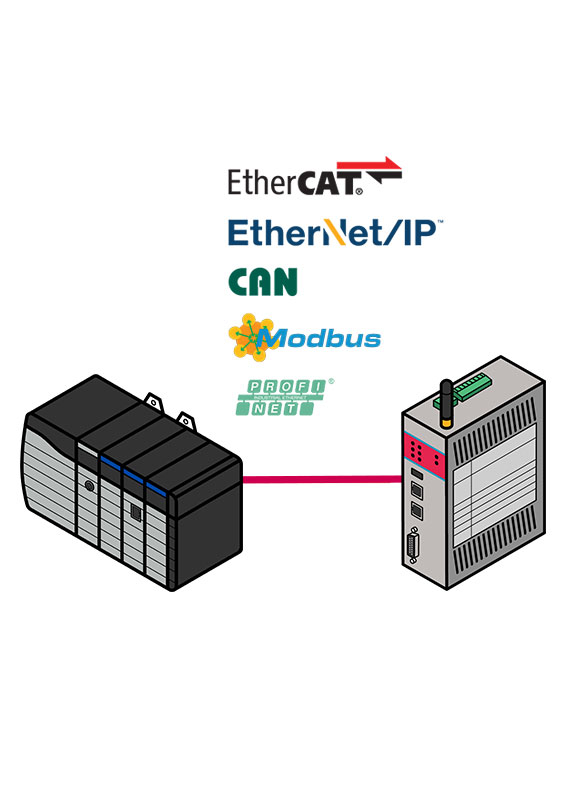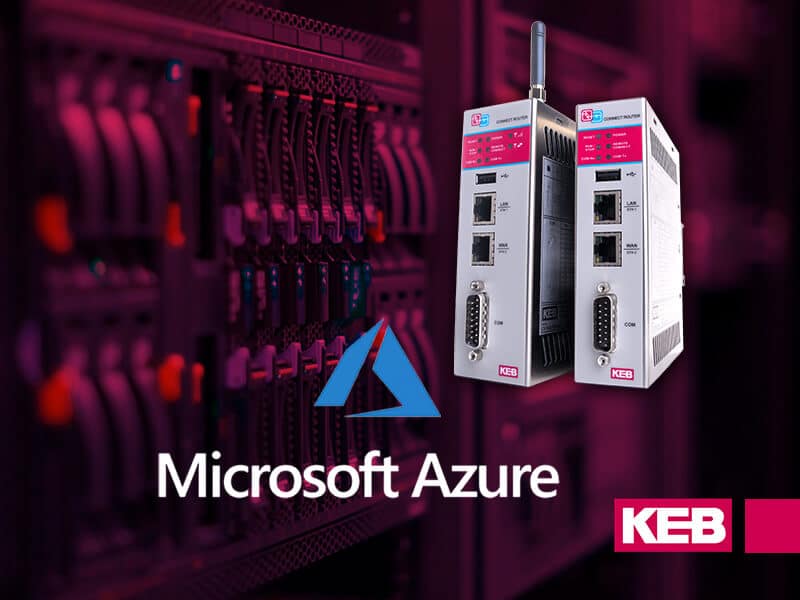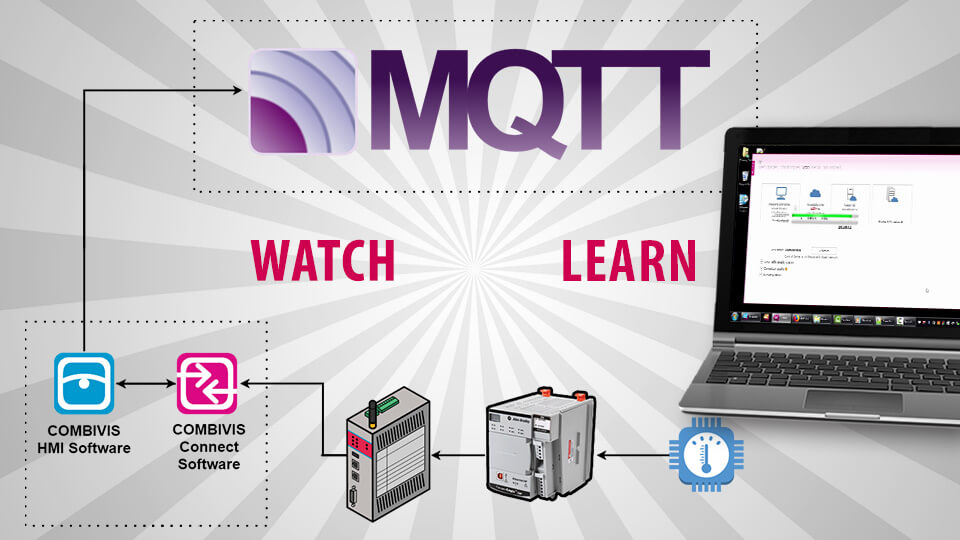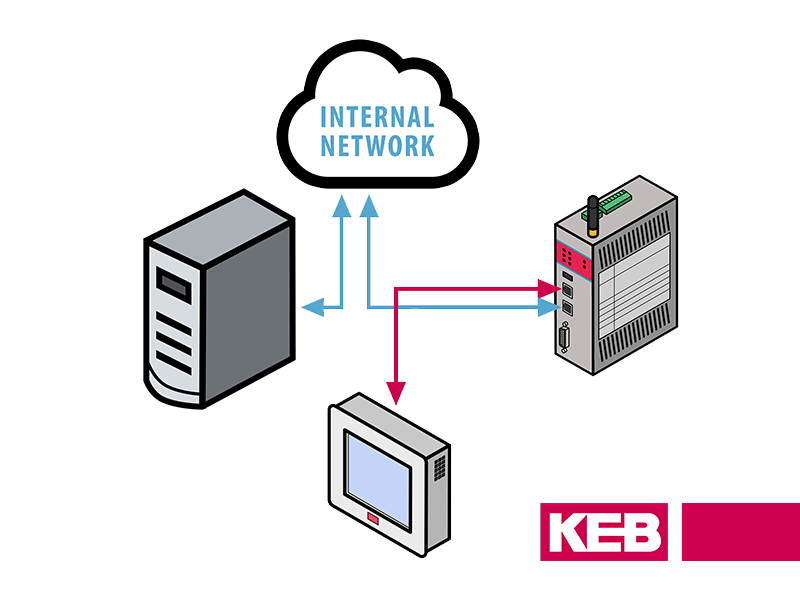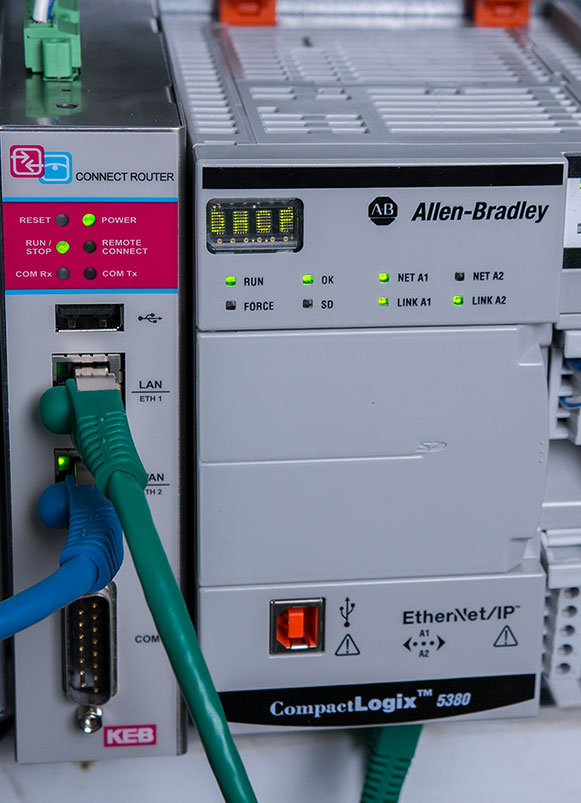KEB’s Edge Gateway connects local industrial controllers to the cloud. The gateway uses a lightweight MQTT protocol to push tag data to common cloud platforms like Amazon Web Services (AWS), Microsoft Azure, and Google Cloud.
Product Details
Push local PLC data to the cloud with the lightweight MQTT protocol.
The Edge Router is designed for tough industrial applications and connects to nearly every PLC platform.
The Edge Gateway is a DIN Rail mount, powered with 24VDC, and carries UL and CE marks.
The router supports over 40 communication drivers including EtherNet/IP, Profinet, OPC, Modbus TCP, and EtherCAT.
An Industrial Cellular Router version is available for remote and mobile applications. It works on 4G global GSM networks and a variety of antenna types are possible.
Ideal applications include Water/Wastewater, SCADA, Renewable Energy, and Discrete Automation.
Tech Specs
Electrical
• CPU Processor – ARM Cortex A8 processor Freescale i.MC535 1 GHz
• Microsoft Windows Embedded Compact 7
• 512 MB RAM
• 256 MB read-only NAND-flash (O.S. and Runtime)
• Between 2-4GB depending on model
Mechanical
DIN Rail Mount (35mm)
Certifications
- CE
- cULus LISTED
Interfaces
- • WAN – Ethernet 10/100 Mbps (RJ45)
- • LAN – Ethernet 100 Mbps (RJ45)
- • USB – 1 x USB 2.0
- • Serial – 1 x RS-232/422/485 (DB15M) optoisolated
- • 1 x SIM Card (mini) socket push-push type (available in GSM Cellular model)
- • 1 x SMA plug (various additional antenna options) (available in GSM Cellular model)
Environment
- Operating temperature: 0 … +59 °C
- Storage temperature: -20 … +60 °C
- Relative humidity: 5 … 95 %, without condensation
- IP20
Tech Specs
• Cellular network
• Standard 2G/3G/3G+/4G EDGE/HSPA quadriband up to 5.76 Mbps upload/14.4 Mbps download
• SMAStecker auxiliary diversity antenna
• SIM card mini socket push-push type
Memory
• 2 GB eMMC solid state drive
• 4 GB eMMC solid state drive
Software
• COMBIVIS connect
• COMBIVIS HMI
MQTT
An optional MQTT push agent is available for pushing data to IoT Cloud platforms like AWS, Microsoft Azure, etc.
Options
• Cellular network
• Standard 2G/3G/3G+/4G EDGE/HSPA quadriband up to 5.76 Mbps upload/14.4 Mbps download
• SMAStecker auxiliary diversity antenna
• SIM card mini socket push-push type
Memory
• 2 GB eMMC solid state drive
• 4 GB eMMC solid state drive
Software
• COMBIVIS connect
• COMBIVIS HMI
MQTT
An optional MQTT push agent is available for pushing data to IoT Cloud platforms like AWS, Microsoft Azure, etc.
Related
How Do MQTT IoT Routers Work?
What is an MQTT IoT Router?
An MQTT IoT router connects various IoT devices for monitoring and data management. Think of it as a central hub for IoT sensors and devices, connecting these systems and routing any data they collect to a shared cloud platform.
An IoT router supports data communication between devices on the network, allowing commands to be sent from cloud-based applications to various IoT devices. The router acts as a translator for inter-device communication, so information flows seamlessly from the device to the cloud and vice versa.
An MQTT gateway (or router) uses a special data protocol to collect and send device information to the cloud called Message Queuing Telemetry Transport (MQTT). This reliable machine-to-machine network protocol works especially well for connecting devices in remote locations with scarce network bandwidth.
An IoT router can also be augmented with cellular capabilities for remote and mobile applications. For example, KEB’s Edge Gateway offers an industrial cellular router version for use with global GSM networks worldwide, providing a more robust and versatile connectivity solution.
MQTT Gateway Advantages
MQTT offers many advantages over other common data protocols for IoT (such as CoAP or DDS), including scalability. The MQTT gateway uses a simple publish/subscribe model that puts minimal bandwidth burden on the network. As such, it can be scaled up across more devices into larger networks while maintaining performance and power efficiency.
Reliability is another major benefit of MQTT gateway technology. As a lightweight network protocol, MQTT is uniquely suitable for connecting devices in remote locations. Its small code footprint and bandwidth requirements enable dependable connections, even across IoT devices with resource limitations.
Moreover, MQTT is a highly secure protocol for transferring data between devices and the cloud. MQTT servers can authenticate clients using passwords, an SSL protocol, or a combination of both to ensure safe, secure data management.

Industrial Applications for MQTT IoT Routers
Thanks to their robust flexibility and limited resource draw, MQTT IoT routers can support many industrial applications. KEB’s Edge Router can operate in temperatures of 0 to 50 C and includes a heavy-duty DIN rail mount for secure mounting even in challenging work environments.
Renewable energy sectors, such as wind power, leverage the KEB IoT router to monitor and maintain wind turbines in the field. This gateway system gathers data from various sensors within the wind farm turbines, measuring energy output, stresses, temperatures, and even shaft vibration and speed to ensure safe, 24/7 operation.
SCADA (supervisory control and data acquisition) is a natural fit for the KEB IoT router, empowering users to gather equipment data in real-time from remote locations via sensors. These performance insights help organizations manage equipment and workflow conditions, reduce costs and downtime through predictive maintenance, and more.
Other ideal uses for the KEB IoT router include Discrete Automation and water/wastewater applications. This router enables remote monitoring of wastewater operations using on-site PLC. Furthermore, the Edge Gateway supports both set-up and troubleshooting of new equipment and offers cellular connectivity to support machines in remote locations. An HMI version of the router can be used to log and view important metrics remotely, including water levels, temps, and pH values.
